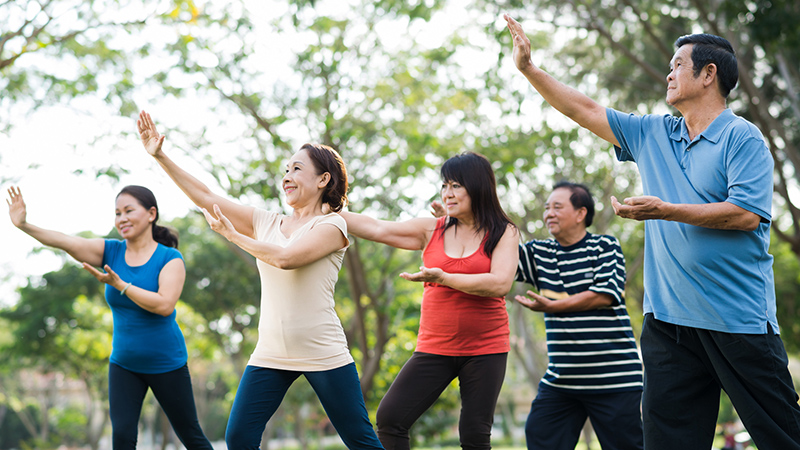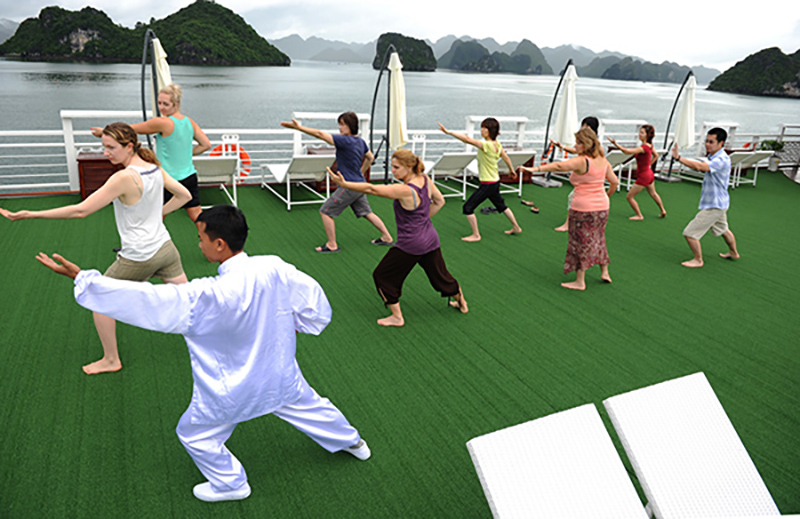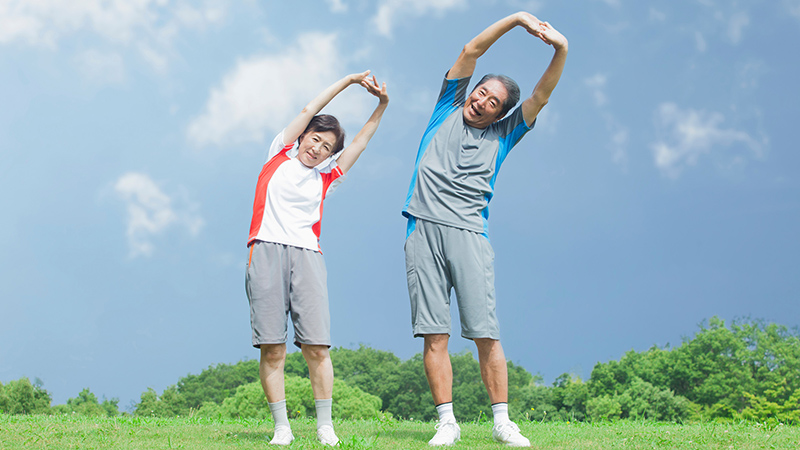Visit Vietnam, you can see numerous people doing a slow-motion exercise in the park, on the sidewalk and even in some tourist spots like Halong Bay. It’s the practice of Taichi, a group of gentle movements with clear health benefits for all ages.
Trace Back The Origin Of Taichi
The formation of Taichi was believed to have a connection Taoist and Buddhist monasteries. Although there is no clear evidence, many schools of taichi took inspiration from Taoist monk, Zhang Sanfeng in the 12th century.
This is also the period when Neo-Confucianism (a conscious synthesis of Taoist, Buddhist, and Confucian traditions, especially the teachings of Mencius) gained popularity in Chinese intellectual life.
Five major styles of Taichi developed during the 16th and 19th century, including Chen style, Yang style, Wu-Hao style, Wu style, Sun style. The dominant family techniques share the same underlying theory but vary in their approaches to training.

In Vietnam, no one really knows how and when this Chinese martial art penetrated into the daily life of the Vietnamese. The local people practise Taichi for health benefits rather than self-defence. So it is common to see the middle-aged and the elderly doing Taichi moves in the park, on the pavement across all Vietnamese cities.
Recently, due to the rise of a healthy and balanced lifestyle among youngsters, more and more young Vietnamese adults pay attention to Taichi as well as other wellness-promoting subjects like yoga.
The Taichi club forum in Hanoi, established in 2012, now has nearly 3000 members. Also, Taichi is incorporated in a myriad of nature discovering tours in Vietnam as it promotes the harmony from inside out with natural elements like “qi” (the air).
The Philosophy Of Taichi Practice
Taichi emphasizes the balance between yin and yang. The harmonious internal flow of “qi” (the air) is the ultimate goal of Taichi training. Qi is regarded as an internal energy force of the body. Practising Tai chi helps to unblock and stimulate an appropriate flow of “qi”.
Taichi movements must be accompanied with deep and natural breathing, shifting attention on bodily sensations.
In defending, Taichi students avoid using violent force to resist violent force. Softness and pliability are the rule of thumb to redirect the incoming force and safely make it disappear.

Non-competitive Taichi exercise involves gentle movements of the whole body combined with mindful breathing. It can be considered a form of meditation in motion, which brings about inner peace.
Moreover, Taichi moves don’t impose much stress on muscles and joints. They are usually circular moves and you don’t push much effort to do. Muscles are relaxed while not fully extending or bending the joints. So people of all ages can try to practise Taichi at home for health benefits.
How Taichi Helps To Improve Your Health Condition
Tai chi helps to control breathing in such a way as to bring oxygen (“qi” element) to the whole body. It does exercise for the lungs, increasing oxygen absorption and practising diaphragm. Regular Tai chi optimizes the respiratory system to provide enough oxygen for the body to operate.
Gentle stretching and movements in Taichi regulate the blood flow, enhancing the natural blood circulation without pushing other organs. Optimal blood circulation bolsters the performance of all parts of the body, strengthening the immune system to fight against common diseases such as cold, seasonal flu.

Taichi is also proved to reduce the chance of ageing-associated diseases. Studies of the British Journal of Sports Medicine indicated that the blood glucose levels declined significantly in people who did Tai Chi exercises on a regular basis. This is a possible connection to improve the control of type 2 diabetes and prompt a drop in the inflammatory response.
This low-impact, slow-motion exercise also addresses muscle strength, flexibility, aerobic conditioning, which are key components of fitness. Thus, no wonder Harvard Health Publishing called Taichi “the perfect activity for the rest of your life”.
Basic Taichi Movements For Beginners
To give you an insightful look into Tai chi, we have here some basic movements you can try to warm up at home. Keep an eye on your breathing during the exercise. Make sure you inhale and exhale deeply and slowly
Disclaimer: If you have a medical condition or any special health concerns (pregnancy, disability…), consult your general practitioner before trying this.
Warm-up
- Put your feet together and bring your arms up slowly, take a breath in then bend your knees Breath out as you flow your arms down
- Come up and down again. Match your breathing with your movement
- Open the left leg, continuing to moving your hands up and down
Hug the Tree
- Begin this move in a T-stance
- Lift both hands to your sides as you breathe in
- Breathe out, move your hands together like you are hugging a tree, lower your knees a bit
- Repeat the move 2-3 times
Part the Horse Mane
- Bring both hands in one on top of the other with a space in the middle, palms facing each other as if you’re carrying a ball
- Shift your weight to whichever foot is on the same side as the top hand. So if your right hand is on top, shift your weight to your right foot
- Bring the opposite leg in front and as you shift your weight to the front leg, move the bottom hand forward as if you’re throwing a Frisbee
- The other hand should come back and down to “rest on a large dog’s head”
Warrior & Scholar
- Put your feet together and relax your hands at your sides
- Take a breath in while bending your knees and sinking down, left hand flat and right hand balled up in a fist
- Continuing to inhale, cover your right fist with your left hand and lift up
- Come to a straight-legged stance
- Exhale, release and sink back down
Watch this video for visual presentation: https://www.youtube.com/watch?v=cEOS2zoyQw4
Doing Taichi under the guidance of a master during your trip to Vietnam is a perfect add-on for your travel. Not only join the local with their daily activities, but you are also promoting your wellness.
We suggest you take a night cruise in Halong Bay, one of the New Seven Wonders and join the morning Taichi class on the sundeck. The spectacular view of the bay will take your experience to the next level!


